The Big List of Narcotic Drugs
Narcotics have historically been used to refer to a number of mind-altering substances as well as to provide a broad legal designation for a range of illicit drugs; today, the Drug Enforcement Administration (DEA) more specifically defines narcotic drugs as those that relieve pain and dull the senses, and the use of the word is most commonly associated with opioid drugs.
The naturally occurring opiates (plant alkaloids derived from the opium poppy) as well as synthetic (man-made) and semisynthetic opioids are considered to be narcotic drugs, which include both legally prescribed and illicit varieties. Opioids not only diminish the perception of pain signaling in the central nervous system but also produce rewarding, euphoric effects, making them targets for abuse and highly addictive.
Commonly Abused Narcotics & Opioids
Below is a brief list of some of the more widely-known narcotics and opioids drugs:
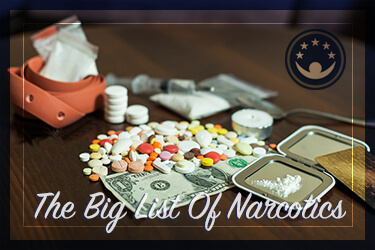
- Opium
- Heroin
- Codeine
- Oxycodone
- Hydrocodone
- Tramadol
- Morphine
- Hydromorphone
- Fentanyl
- Carfentanil
The United States is in the midst of an opioid epidemic. The American Society of Addiction Medicine (ASAM) indicates that close to 3 million people battled opioid addiction (to either heroin or prescription painkillers) in 2015. More than 60 percent of the record-high overdose deaths in 2015 involved an opioid drug, and 91 people in the US die from an opioid overdose daily, the Centers for Disease Control and Prevention (CDC) reports. Also in 2015, roughly 300 million prescriptions were dispensed for narcotic pain medications around the world, and Americans consumed 80 percent of them.
Opioid abuse, addiction, and overdose are considered serious public health concerns in the United States. Here we’ll provide more detail about some of the more commonly discussed prescription painkillers and illicit narcotic drugs.
Opium
For years, opium was a widely-used drug derived from the crude botanical extract extruded from the opium poppy plant. With minimal processing, opium consisted of a mixture of naturally-occurring opiate alkaloids—substances that serve as the building blocks for the synthesis of many modern opioid drugs. Opium was sometimes distributed as a liquid or solid, but most commonly encountered as a brownish powder, according to the DEA. Opium was most commonly smoked but could also be pressed into pill form or dissolved into a tincture or other solution for oral use or injection.

The opioid alkaloids contained in opium extracts (e.g., codeine, morphine, thebaine) are used to synthesize many prescription narcotics (like morphine, codeine, oxycodone, etc.). Heroin is also made from raw materials obtained from the opium poppy plant. Opium is not as common a drug of abuse in the United States as other opioids are, and outside of limited use as an anti-diarrheal agent, has no medical use in its traditional form.
Heroin
An illegal, semi-synthetic opiate, heroin is classified as a Schedule I controlled substance in the United States, as it has no approved medical uses and a high potential for abuse and addiction. Opioids like heroin dull pain but can also impair cognition, increase sedation, and slow certain autonomic functions such as those that control respiratory rate. Heroin may be distributed as a brown or white powder or a sticky black substance called “black tar heroin.” The drug can be snorted, smoked, or injected. Heroin creates an intense and rapid “high” or “rush,” and individuals often cycle between an awake and unconscious state, called being “on the nod.”
As prescription opioids become costlier and less accessible, individuals may be opting for cheaper options like heroin. The CDC reports that three out of four people who initiate heroin use began by abusing a prescription opioid, close to half of those who use heroin are addicted to prescription opioids, and nine out of 10 also abuse another drug.
Overdose is a major risk of abuse. The rate of heroin overdose deaths increased by nearly 20 percent from 2015 to 2016, and close to 15,500 people died from drug overdoses involving heroin in 2016. Heroin overdose symptoms may include markedly constricted pupils, difficulties breathing, respiratory arrest, stupor, sluggish movements, confusion, clammy and cold skin, slow heart rate and low blood pressure, a bluish tinge to the nails and lips, and a potential loss of consciousness. Heroin overdose is a medical emergency; if an overdose is suspected, call 911 immediately.
ASAM reports that more than 600,000 people battled heroin addiction in 2015. Heroin and other opioid drugs increase dopamine activity in the brain. This surge in dopamine accompanies the burst of pleasure that is associated with opioid use and strongly reinforces continued, compulsive use of these drugs.
Oxycodone (OxyContin, Roxicodone, and Percocet)
One of the most popular and arguably one of the most controversial drugs in recent history, OxyContin is an extended-release formulation of oxycodone that has made more than $35 billion in sales for Purdue Pharma since it burst onto the market with aggressive marketing strategies in 1995, Forbes reports. Purdue has paid out millions for its alleged role in the opioid addiction epidemic currently sweeping across America.
OxyContin and other opioids containing oxycodone are effective painkillers for moderate to severe pain; however, they can quickly lead to the development of physical dependence and addiction with regular use or abuse. In its various formulations, oxycodone is dispensed as both immediate and extended-release tablets intended for oral use. Oxycodone is also available in several combination formulations that include analgesic pain relievers such as acetaminophen and aspirin.

NSDUH reports that more than 4 million American adults were currently abusing prescription painkillers at the time of surveying in 2014. In 2016, the Monitoring the Future (MTF) survey published that 3.4 percent of high school seniors had abused OxyContin in the previous year.
People may crush, grind, or dissolve oxycodone tablets in an attempt to bypass those with an extended-release mechanism prior to snorting, smoking, or injecting the drug. This greatly increases the odds for overdose as the full dose intended for a timed release is delivered much more quickly. Oxycodone is one of the most prescribed prescription pain relievers and also one of the most common drugs involved in prescription opioid overdose fatalities.
In 2007, OxyContin was reformulated to make it more abuse-deterrent. When crushed, the result is now a gooey substance that is more difficult to abuse. Even so, the drug can still be abused by swallowing and taking higher doses at one time. The Pharmaceutical Journal reports that while the reformulation of OxyContin did decrease abuse rates, individuals may be turning to the illicit drug heroin as a replacement.
Hydrocodone (Vicodin, Norco, Lortab)
Hydrocodone is the top-prescribed and most regularly diverted and abused opioid drug, according to the DEA. Americans consume around 99 percent of the world’s supply of hydrocodone, which became more tightly regulated in 2014. Hydrocodone and its many combination products are now classified as a Schedule II controlled substances.
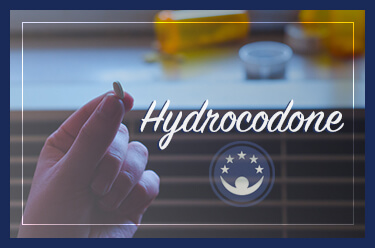
In addition to being an effective painkiller, hydrocodone has some cough suppressant (antitussive) properties and is a component of some prescription cold and cough formulations. Prescribed as tablets or oral solution, hydrocodone products are intended for oral administration, but some may attempt to misuse them by snorting, smoking, or injecting the drug. Nearly 3 percent of high school seniors reported misusing Vicodin (hydrocodone/acetaminophen) in 2015.
The DEA warns that hydrocodone is one of the drugs most frequently involved in prescription opioid overdose deaths, and it is considered highly addictive.
Morphine (MS Contin and Kadian)
Morphine is a natural opiate alkaloid derived directly from the opium poppy plant. Pharmaceutical morphine is used as a narcotic analgesic for both acute and chronic pain management, and also to provide sedation before surgical procedures. Morphine continues to be one of the most widely utilized pain medications in hospital settings, where it was once administered almost entirely as an injectable solution.
Morphine typically remains active in the bloodstream for 4-6 hours, and dependence can develop rapidly. The Global Information Network about Drugs (GINAD) reports that between 1990 and 2010, the US consumed over half of the world’s morphine, and an estimated 10 percent of Americans have abused an opioid drug (including morphine) at least one time in their lives. Many synthetic and semisynthetic narcotics are derived from morphine.
Hydromorphone (Dilaudid and Exalgo)
Another Schedule II narcotic opioid, hydromorphone available as an injectable solution, an oral solution, and as both immediate release and controlled release tabs. According to the DEA, there were close to 4 million prescriptions dispensed for hydromorphone products.
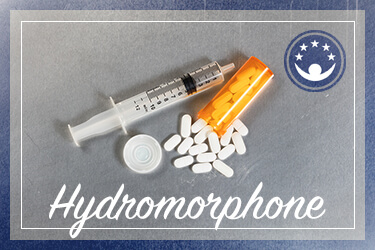
Though indispensable as a powerful agent for pain control in hospitals and other clinical settings, hydromorphone is commonly diverted after being obtained through “doctor shopping,” forged prescriptions, questionable prescribers, and pharmacy and nursing home theft. When misused, people may attempt to smoke, snort, or inject the crushed tablets. It is a semi-synthetic opioid derived from morphine that is very potent, highly addictive, and has a high potential for overdose when abused. The Drug Abuse Warning Network estimated that, in 2011, nearly 20,000 people received care in an emergency department (ED) for the misuse of hydromorphone.
Fentanyl (Actiq, Fentora, Duragesic, Subsys, Abstral, and Lazanda)
Fentanyl is prescribed to treat chronic and severe pain in those who are tolerant to opioids. Fentanyl is a Schedule II drug that is 50-100 times more potent than morphine.
Overdose rates for synthetic opioids (including drugs like fentanyl) increased 100 percent between 2015 and 2016. Fentanyl was involved in nearly 3,000 overdose deaths in the second half of 2016. Given the startling prevalence of fentanyl overdoses throughout the country, numerous warnings regarding the danger of this drug have been issued.
The DEA reports that 6.5 million prescriptions for fentanyl were dispensed in 2015. Fentanyl is available as lozenges, sublingual tablets, buccal tablets, as well as metered nasal and sublingual sprays. It may be abused by freezing and cutting up the patches to suck or chew on them, or by scraping the gel off for injecting or oral ingestion.
The drug is capable of eliciting an intense and rapid rush of euphoria, making it extremely addictive. Due to its small molecular size, fentanyl is able to be absorbed through the skin on contact and can be lethal in relatively small doses due to its potent effects.
Codeine
When extracted from the opium poppy, codeine can be used to directly manufacture pharmaceutical formulations for prescription use. However, much of the codeine used for medicinal use is actually manufactured using a synthetic process that relies on morphine as a chemical building block. In the United States, codeine is only available in generic form or in combination products, such as Tylenol with codeine (e.g., Tylenol 3).
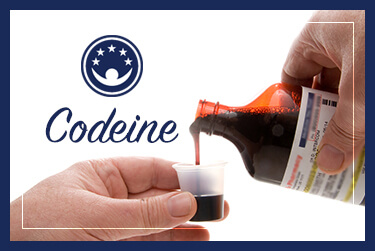
Codeine is a relatively mild opioid analgesic and a less potent painkiller than morphine. Codeine also has antitussive properties, and it is regularly prescribed to treat coughs as well as pain. The drug may be misused by consuming the tablets or oral solution in quantities that exceed prescribed doses as well as by combining it with other intoxicating substances.
Around 10,000 people received emergency care for misusing codeine in 2011, according to the DAWN report. It is generally thought to be less addictive and habit-forming than more potent narcotics; however, it still carries a risk for abuse, dependence, addiction, and overdose.
Methadone (Dolophine and Methadose)
Methadone is one of the longer acting opioid agonists, staying active in the bloodstream for close to a full day, meaning that it can be prescribed in lower doses less often in order to keep opioid withdrawal symptoms at bay. Methadone is still an opioid agonist drug though; therefore, it does have the potential to be abused and also lead to the development of physical dependence and addiction. More than 66,000 people were treated in EDs for the misuse of methadone in 2011, per the DAWN report. It is also one of the most common drugs found in prescription opioid overdose fatalities.
Meperidine (Demerol)
Even when taking Demerol as directed and with a necessary prescription, a person can become dependent on it and suffer withdrawal symptoms when the drug wears off. When physical dependence becomes significantly severe, it can become difficult to stop taking Demerol, which may lead to continued, compulsive misuse and addiction.
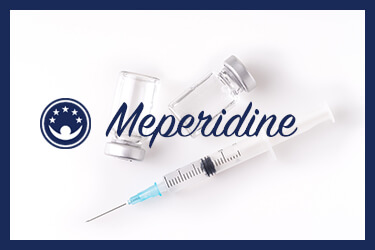
Meperidine may be prescribed as a tablet or syrup. In cases of significant physiological dependence, people may benefit from a slow tapering and other medical detox interventions to avoid severe withdrawal at the start of the recovery period.
Oxymorphone (Opana)
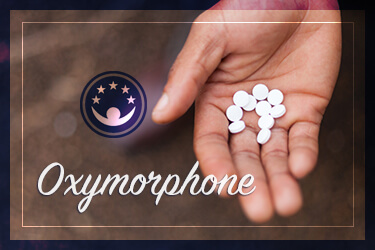
Opana is a powerful painkiller for the treatment of severe pain. It is usually prescribed when alternative treatments are ineffective or when a person is already tolerant to other opioids. It is roughly twice as powerful as OxyContin, and its maker, Endo Pharmaceuticals, reported nearly $400 million in sales in 2011.
In 2010, OxyContin was reformulated to make it more difficult to misuse, and this change may have actually opened the door to the abuse of Opana. At the time, the extended-release tablet form of Opana (now discontinued) could be crushed and then snorted or injected for an intense high. In 2012, Opana was itself reformulated to deter abuse. While the new coating did decrease the rate of intranasal abuse of Opana, it is still possible to crush and inject the drug. Repeated oxymorphone use can easily lead to physical dependence, and it is extremely addictive.
Tramadol (Ultram, Ultracet, and Ryzolt)

Tramadol is a somewhat unique opioid analgesic that not only has opioid agonist effects but also acts to block the reuptake of norepinephrine and serotonin. More than 43 million tramadol prescriptions were dispensed in 2013.
Tramadol has generally been considered to have a relatively low abuse and dependence potential, the Primary Care Companion to the Journal of Clinical Psychiatry reports; however, the DEA classified tramadol as a controlled substance in 2014, as over 3 million Americans were reported to have abused it in their lifetime by the year 2012. Tramadol is most often abused by people who are opioid-dependent already, by healthcare providers, and by chronic pain sufferers. While it may be less addictive than other opioid narcotic drugs, it still may lead to physical dependence and addiction, especially when misused.
Carfentanil

A fentanyl analog, carfentanil is a powerful opioid narcotic developed for use in veterinary medicine as a general anesthetic for large animals. This so-called “elephant tranquilizer” is roughly 100 times more potent than fentanyl, 5,000 times more potent than heroin, and as much as 10,000 times more potent than morphine, the DEA warned in a 2016 alert to the public and police in response to the increasingly common presence of carfentanil in illicit drug samples.
The drug is often encountered in a form that may resemble powdered heroin or cocaine, but it is much more dangerous and may be lethal in exceedingly small doses. It may be being added to heroin, used to “cut” or stretch the drug, or passed off as a different drug. In addition to having a very high potential for fatal overdose, it is also highly addictive.
Buprenorphine
Buprenorphine is a partial opioid agonist used as an analgesic as well as an FDA-approved treatment medication for opioid dependence. It is available in different forms under brand names such as Buprenex, Butrans, and Probuphine. In combination with the opioid antagonist drug naloxone, buprenorphine is available as Suboxone, Zubsolv, and Bunavail.
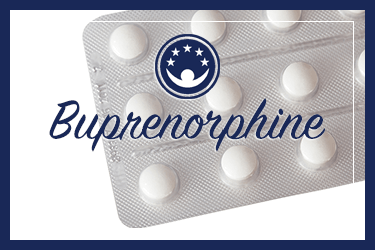
In 2012, more than 9 million buprenorphine prescriptions were dispensed in the United States. Though widely used as a treatment medication for managing opioid dependence, it may still be abused and has some dependence liability of its own.
The introduction of naloxone in combination products was made to deter some of the inherent abuse potential or buprenorphine, as naloxone is an opioid antagonist drug. The naloxone component is poorly absorbed when used orally, allowing the buprenorphine component to remain active when taken as directed for therapeutic use. However, when buprenorphine combination products are intentionally misused via injection routes, the naloxone effectively blocks some of the opioid effects, and can furthermore precipitate the immediate onset of uncomfortable opioid withdrawal symptoms.
Despite the progress made with the safeguards of the combination products, some forms of buprenorphine are still abused. The DAWN report includes an estimate of more than 20,000 people receiving ED treatment for buprenorphine abuse in 2011.
Signs a Loved One Is Abusing a Narcotic Drug
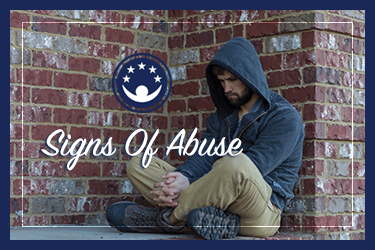
Narcotic drugs can be incredibly dangerous and have a high risk for potentially life-threatening overdose. More than 42,000 opioid-related deaths were reported in the United States in 2016, amounting to more than 66% of all drug overdose deaths that year. In addition to the undeniable risk of overdose, chronic opioid misuse can lead you or a loved one toward a compulsive cycle of physical dependence, withdrawal, and other opioid addiction associated health effects.
Early intervention is key, as overdose is preventable, and opioid addiction is treatable. There are several things to watch out for when abuse of a narcotic is suspected, such as:
Narcotic drug abuse and addiction are treatable with behavioral therapies, counseling services, medications, detox services, and supportive care. There are many different forms of treatment available to choose from; the key is to reach out for help as soon as possible.
